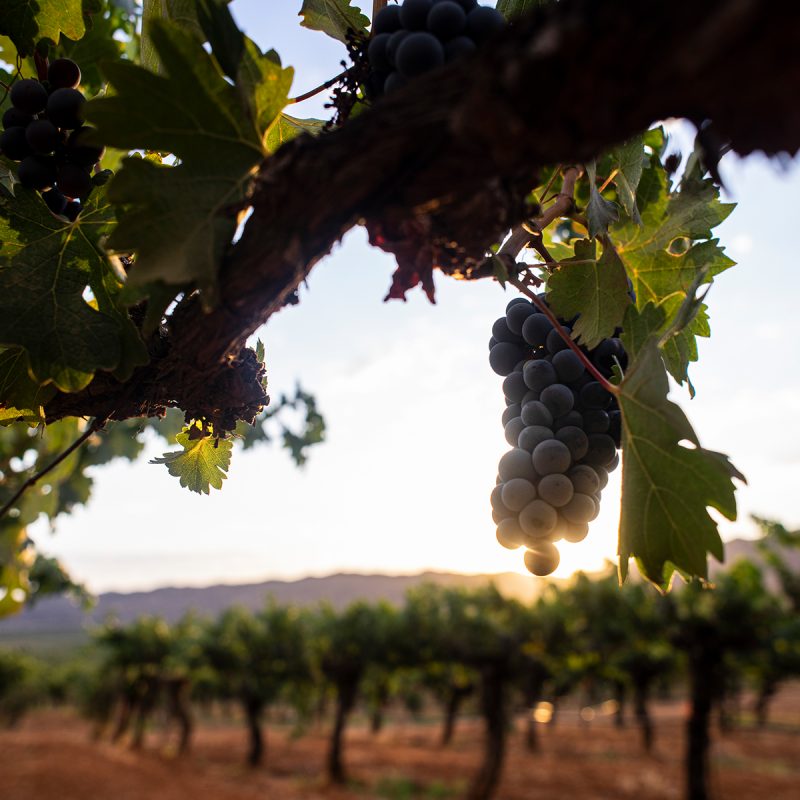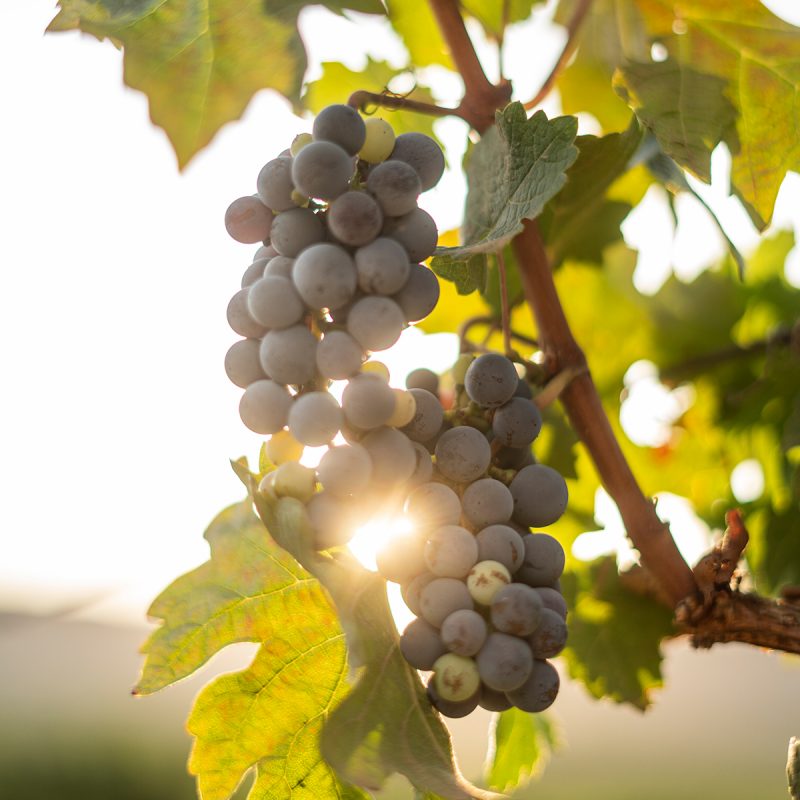Mexican Wine gets its first University

In 2000, Baja California had only 13 wineries, and three hadn’t made wine yet. Today Mexico’s leading wine region has 230 wineries that between them have won more than 1500 medals in international competitions. The region is increasingly popular with international wine tourists and its wines are sought out at the finest restaurants in Mexico City.
What it didn’t have until now was university support, in the way that UC Davis supports the California wine industry on the other side of the border, or Université Montpellier supports French wine. That has changed with the opening of the Center for Wine Studies of Baja California at CETYS University in Ensenada.
All wine regions are unique, but Baja is more unusual than most. It’s a desert near an ocean, giving it cooling winds for a good year-round climate, but making water precious. There’s very little longterm history of wine production and no local regulations or traditions regarding grape varieties, so everything is up for experimentation. Winemaker inexperience is a challenge, but almost all of northern California’s farmworkers are Mexican (albeit not from Baja) so returnees to the country bring a wealth of experience in the vineyard.
Dr. Diana Celaya Tentori is the new director of the center for wine studies. She is an economist and her doctoral thesis was on the Baja wine sector, so while the center will have enological and viticultural teachers, she comes at wine from the business side. She spoke with Quench about the history of the Baja wine scene, its strengths and challenges, and what having a new university program might mean.

Quench: How did you become interested in the wine industry?
Tentori: When I finished my masters degree, I got a job at the (state) agriculture department in Baja. I was there when this whole shift happened. There were 2 major wineries. One of the major wineries was sold and they decided to stop producing wine. This winery, Domecq, was responsible for buying about 80% of the grapes that were produced in Baja. It got sold to Allied and then it got sold to Pernod Ricard. They decided the market wasn’t good. They had a lot of wine stock and they decided to stop buying grapes in Baja. It was a very complicated time for the grape growers who only knew how to grow grapes and nothing about making wine.
They went to the agriculture department for help. The bright idea they got was that if you can’t sell grapes, plant something else. They could plant tomatoes or cucumbers or whatever. The other wineries that were established in Baja were just starting to get notoriety abroad. They were sending their wine to international competitions and getting medals. We at the agriculture department were doing the exact opposite of what they wanted. They wanted more support for their grape growing. They went to Mexicali, where the capitol of Baja is, to explain the situation. We ended that program and started a new program so grape growers would learn how to turn grapes into wine.
All of the wineries lent their equipment, their people, their cellars, everything, to the winegrowers so they could learn. And they gave classes to them. The classes were named How to Make a Good Wine. This was around 2003, 2004.
Before if you wanted to produce wine in Baja, you had to have the grapes, have the ranch, have the equipment, everything. After that, we found out that collaboration is key. If you want to produce wine in Baja, now you can outsource most of the links in the value chain. Also, the development of this sector was indigenous.

It did not come from national policy. Governmental policies have come after to complement what the producers were already doing.
Quench: What do you mean by “the value chain”?
Tentori: It’s a very economist way of looking at things. You see the production part, which is the first part of the value chain. The field part: the vine is the first part of the chain. Then you go to the processing part, the winemaking. And then the business part, selling the wine, promoting, marketing. And then the aftersales part.
Before, if you wanted to make wine, you had to have the vine, you had to have the cellar, and you had to have the ability to sell the wine and to market it. Right now, people are producing the wine and giving it to other people to market it. UC Davis says it takes about 25 years to get your investment back just in the first part, the agriculture part. But now, people are specializing in very specific roles: just the winemaking or the marketing or consolidated sales or shopping for glass and for bottles. It’s a really interesting model that resembles the industrial district in Italy in the early 1900s when they started producing high-end textiles. When I was studying this particular case, how did it develop, my economist teacher didn’t know a lot about what happened here. They referred me to that theory. The Italian industrial district was the first time this phenomena was studied.

Quench: What can the university bring to the Baja wine scene?
Tentori: In Mexico, we’ve mainly been importers of everything. Technology, winemaking knowledge, even the enologists are from abroad. In the last 10 years we’ve seen the first wave of Mexican enologists who go abroad and then come back and have to adapt what they learn to Baja.
Here in Baja, it’s very desertic. There’s almost no rain. If you go to France to get the best wine education, it rains all year. You can’t irrigate. You come back and see you can’t do that here.
What we want to do in Mexico, we want to gather the knowledge that is being produced by the wineries here and test it scientifically so we can say we’re innovating here too also.
We’ve been struggling with climate change for the last 20 years. Wineries have had to innovate for the last 20 years to keep up their quality. But they don’t know how to publish their findings. They don’t know that they’re actually innovating. Like most producers in the food industry, they think, we got this problem, we adapted, and then we moved on. Then somebody else comes along and says, you’re doing this? We want to do it too. It goes mouth to mouth. We want to do it in a systemized way. We want to start publishing innovations that are happening here, which has not been widely done.
We have lab services for the wine sector. One of the main things they asked us was for good and reliable lab services. The school made a really large investment in lab equipment so we can have quick lab services that they can have in less than 24 hours.
Quench: What are Baja wineries’ main challenges?
Tentori: Lack of water is one of the main challenges. We’re a produce exporter in Baja. We export produce to the US and Asia. All of the produce is made with desalinized water. It is a problem, especially on the coast. In Mexicali to the east, they don’t have water problems, but the climate is like Arizona. It’s 110 or 120 degrees (F) during the summer. It’s not adequate for grape production.
Also, lack of certainty for the wine region. Napa had the same problem in the ’80s where people started to buy land around the wine region because they like the lifestyle. Every centimeter that you take away to do something else that is not planting vines, that’s less wine that you’re going to have in a region with privileged climate.
Quench: What are Baja wineries’ main strengths?
Tentori: We have great climate, even though we have the lack of water. We are able to experiment, still. We are not constrained by regulations, like you can’t plant this here or you can’t do this type of production. We feel it’s a strength.
For me, one of the main strengths is the wineries and the community that has the resilience to confront challenges. When they want to, they get together and they coordinate perfectly. They are able to collaborate and help each other, so that’s a huge strength.

Quench: Most of northern California’s vineyard workers are Mexican. Do you get a lot of returnees in Baja?
Tentori: We get the pruners. They come here, and they are really skilled. They are the people that teach other pruners. But field work, not just in California, also here in Mexico, people don’t want to work outside. People don’t want to work in the fields anymore. We have a huge lack of people who want to work. Wineries go to other states in Mexico for workers.
We do get these skilled workers that come down from California. Most of them stay here and find that they can have a good living here. Here there is no technification in harvesting. Everything is done by hand, which is a good thing if you’re a boutique winery.
The grand opening of the Center for Wine Studies of Baja California at CETYS University (CEVIT) was on November 3rd, 2022 at CETYS University’s Ensenada International Campus. CEVIT is a center dedicated to applied research, technological and business innovation, as well as specialized training in order to contribute to the competitiveness and comprehensive development of the Mexican wine sector.
The Director of CEVIT is Dr. Diana Celaya Tentori. Dr. Tentori has a Master’s degree in Applied Economics and a Doctorate in Social Sciences with a specialty in regional studies from the Colegio de la Frontera Norte (Colef). Her doctoral thesis topic was on the Baja California wine sector and she continues to research regional development and economic integration with an emphasis on governance and policy evaluation in the development of the wine industry in Baja California.


